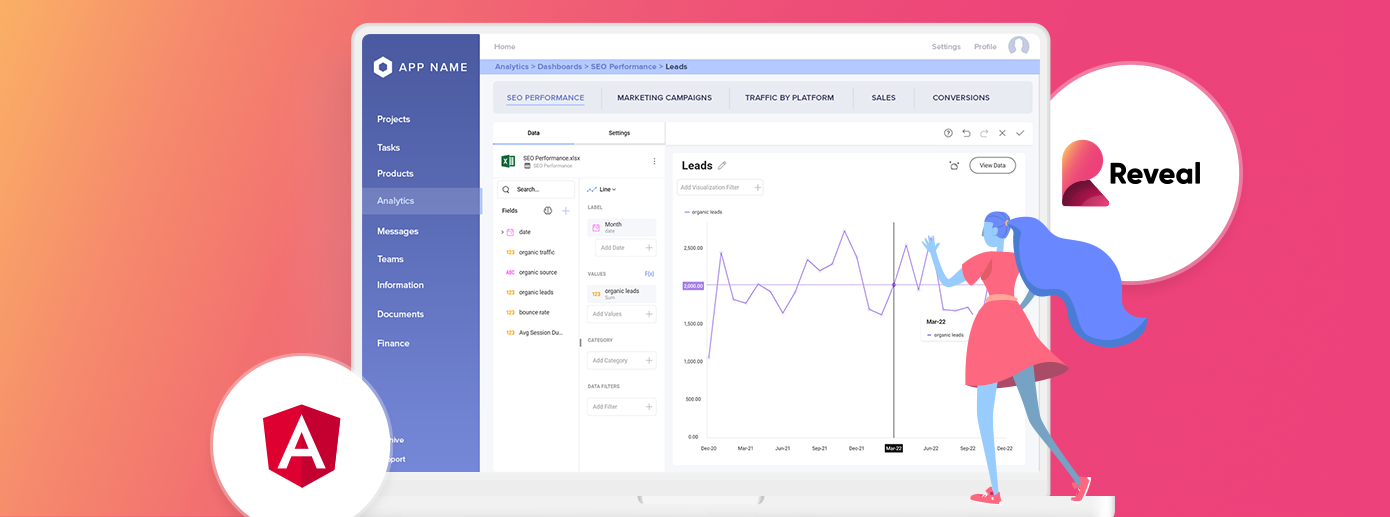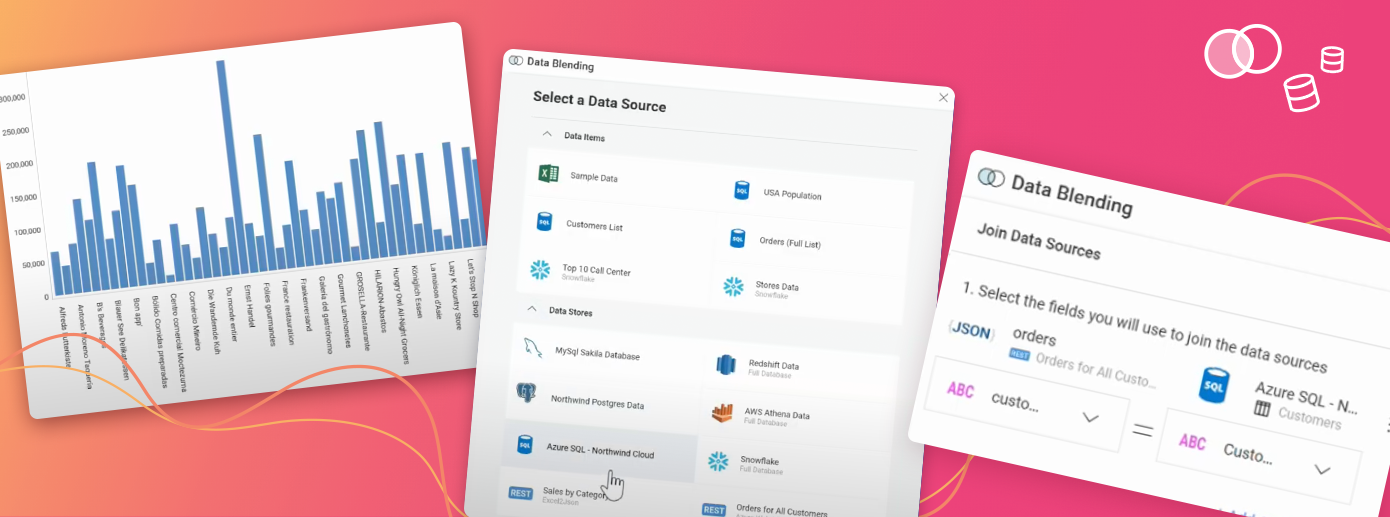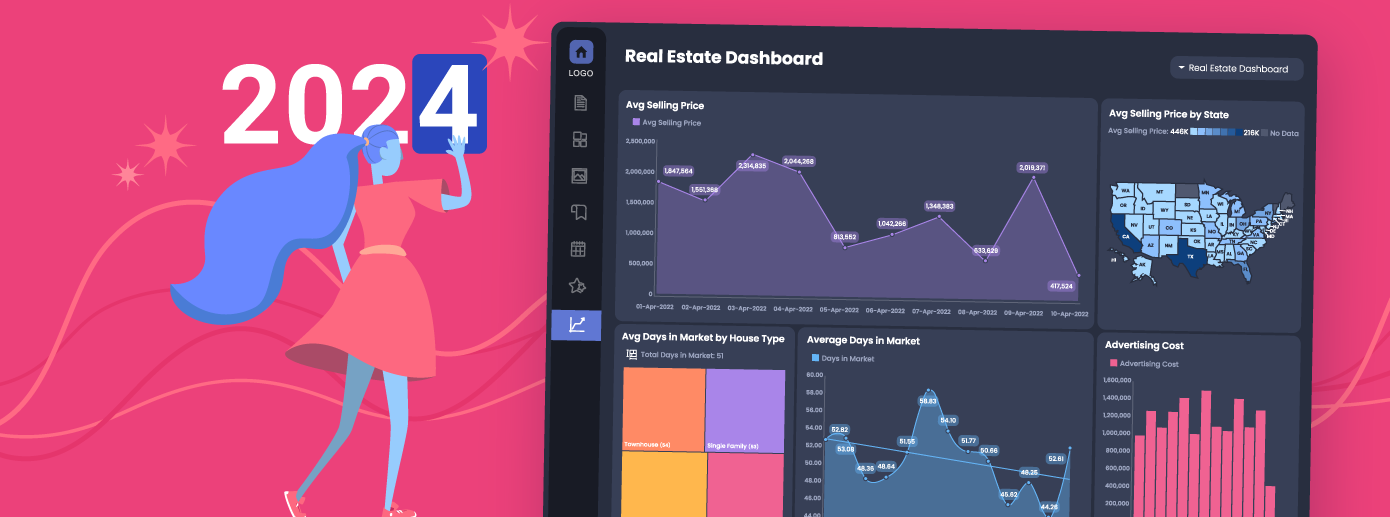

분석 애플리케이션이란 무엇입니까?
분석 앱은 전문 지식에 관계없이 모든 사용자가 데이터에 쉽게 액세스하고 이해할 수 있도록 독립 실행형 애플리케이션 또는 임베디드 분석으로 설계되었습니다. 비즈니스 직원이 작업하는 데이터에 대한 논리적이고 상황에 맞는 보기를 제공합니다.
전 세계적으로 다양한 산업 분야에서 점점 더 많은 기업이 데이터의 힘을 채택하여 통찰력을 얻는 시간을 단축하고 비즈니스 성과를 개선하며 데이터 기반 의사 결정을 강화하기 시작했습니다.
이를 위해서는 원시 데이터를 귀중한 정보로 변환하여 비즈니스 성장에 지능적으로 활용할 수 있어야 합니다. 분석 응용 프로그램이 작동하는 곳입니다. 강력한 도구와 기술을 갖춘 분석 응용 프로그램은 데이터를 수집, 저장 및 검색하여 사용자가 데이터를 최대한 활용하고 영향을 미치는 지점에서 조치를 취하는 데 도움이 됩니다.
분석 애플리케이션이란 무엇입니까?
분석 애플리케이션 또는 분석 앱은 최종 사용자에게 비즈니스 데이터에 대한 실시간 통찰력을 제공하는 셀프 서비스 대시보드, 보고 및 대화형 데이터 시각화를 포함하는 비즈니스 인텔리전스 (BI) 기능 패키지입니다. 이를 통해 기업은 성능 질문에 신속하게 답하고 운영을 개선하여 적시에 효율성을 위해 필요한 변경을 할 수 있습니다.
분석 응용 프로그램은 한 분야나 산업에 국한되지 않습니다. 마케팅 및 영업, 재무 등과 같은 다양한 비즈니스 응용 프로그램에 구축, 적용 또는 내장할 수 있습니다.
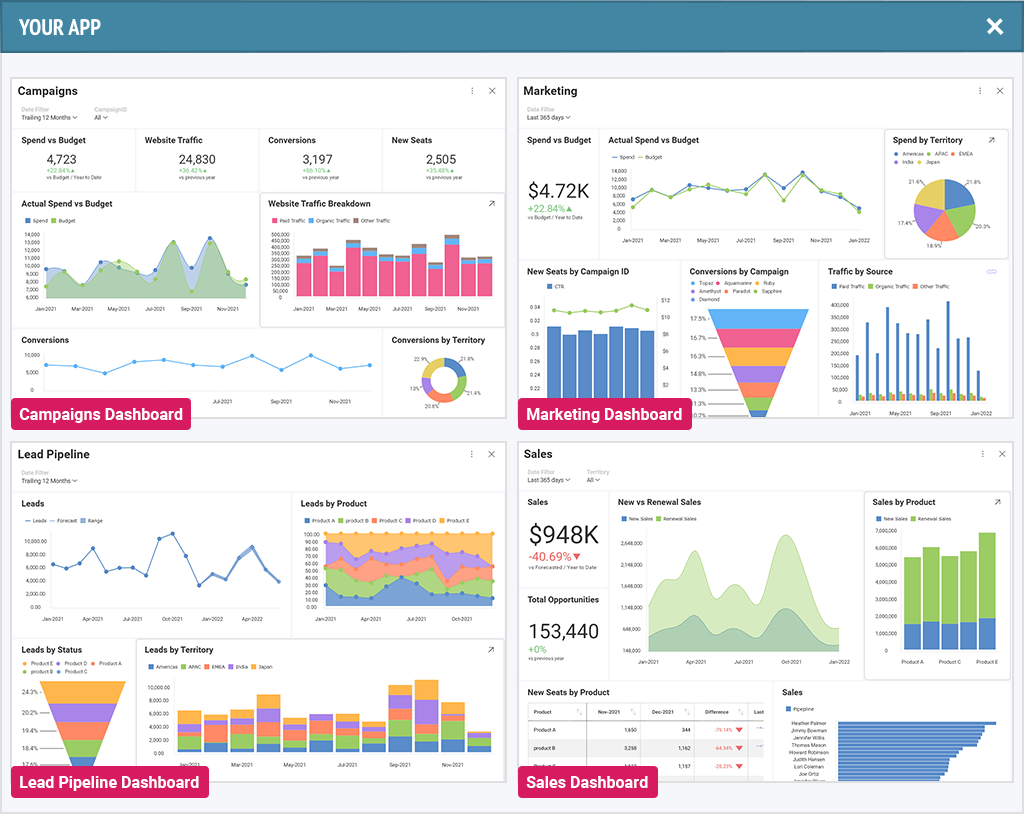
분석 애플리케이션은 어떻게 작동합니까?
분석 앱은 전문 지식에 관계없이 모든 사용자가 데이터에 쉽게 액세스하고 이해할 수 있도록 독립 실행형 애플리케이션 또는 임베디드 분석으로 설계되었습니다. 비즈니스 직원이 작업하는 데이터에 대한 논리적이고 상황에 맞는 보기를 제공하는 즉시 사용 가능한 BI 도구입니다. 사용자가 데이터에 쉽게 액세스하고 분석하여 비즈니스 질문에 답할 수 있도록 도와줍니다.
내장된 경우 데이터 분석 응용 프로그램은 조직의 표준 비즈니스 응용 프로그램과의 단순화된 통합을 위해 개발자를 위한 강력한 커넥터도 포함합니다. 솔루션에 따라 일부 분석 애플리케이션은 사전 정의된 데이터 모델과 노코드 또는 로우코드 앱 개발 환경을 제공하여 통합 및 전반적인 BI 경험을 원활하게 합니다.
분석 애플리케이션 사용의 이점
다음은 분석 응용 프로그램의 가장 좋은 이점 중 일부입니다.
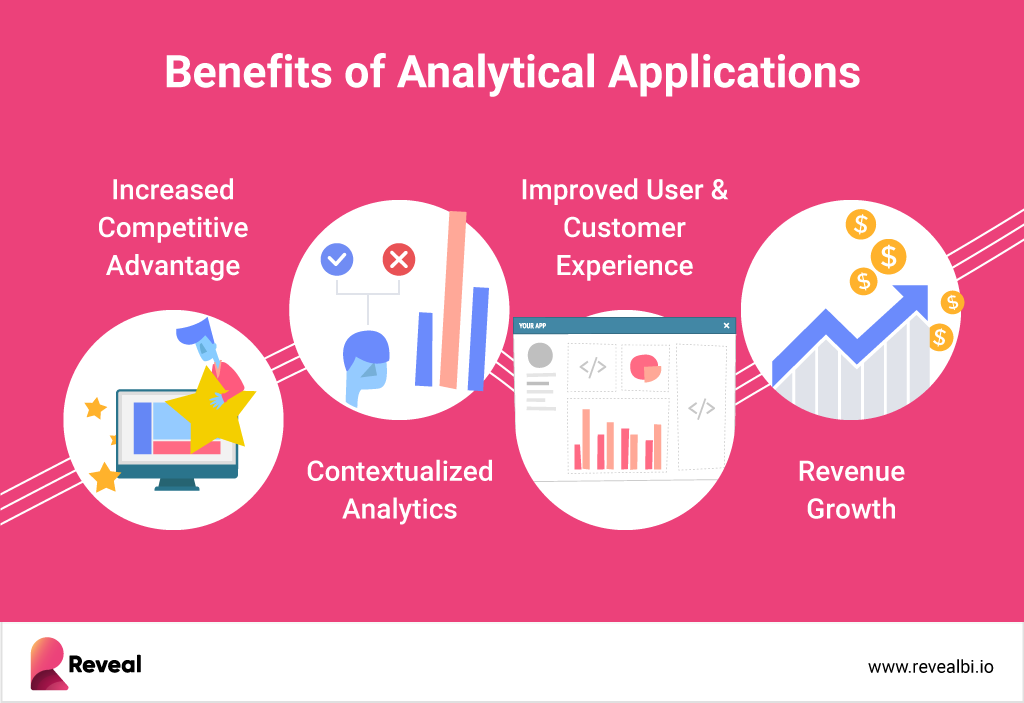
상황별 분석
이제 데이터 자체가 항상 완전한 가치를 제공합니다. 사람들이 일련의 원시 숫자를 보고 있는 경우 데이터 내에서 해당 스토리를 쉽게 해석하고 이해할 수 없으므로 개선을 위해 전략적으로 사용할 수 없습니다. 그러나 분석 응용 프로그램에는 보고 및 데이터 시각화 기능이 있어 사용자가 주어진 상황에서 자신이 보유한 정보를 쉽게 이해할 수 있도록 도와줍니다.
사용자에게 실시간 상황 분석을 제공하면 사실에 근거한 현명한 비즈니스 결정을 내릴 수 있습니다.
향상된 사용자 및 고객 경험
임베디드 분석의 주요 이점 중 하나는 사용자가 이미 사용하고 익숙한 애플리케이션에 데이터 분석 도구 및 기술을 직접 제공한다는 것입니다. 이를 통해 필요한 통찰력을 찾기 위해 여러 앱 사이를 이동할 필요가 없으며 대신 사용자는 데이터가 알려주고 그에 따라 조치를 취하는 데 더 많은 시간을 할애할 수 있습니다.
또한 우수한 임베디드 분석 공급업체는 화이트 라벨 기능도 제공합니다. 화이트 라벨링을 사용하면 분석 솔루션의 모든 부분을 브랜드 테마에 맞게 사용자 지정할 수 있습니다. 분석 응용 프로그램이 소속감을 느낄 때 사용자는 주의가 산만해지거나 앱의 차이를 느끼지 못할 뿐만 아니라 부가 가치를 제공하기 때문에 충성도가 높아지고 만족도가 높은 고객이 됩니다.
향상된 경쟁 우위
BI를 활용하거나 제공하지 않는 경쟁업체가 여전히 이를 파악하려고 노력하는 동안 귀사는 앞서 나가기 위해 고객에게 비즈니스 통찰력을 제공하거나 조치를 취할 수 있습니다. 데이터 분석 애플리케이션은 비즈니스 소유자와 최종 사용자 모두에게 경쟁 우위를 제공합니다. 이러한 이점 중 일부는 다음과 같습니다.
- 데이터 및 대시보드 생성에 대한 쉽고 빠른 액세스
- 목표 시장에 대한 더 깊은 이해
- 개선 기회 발견
- 조치가 필요한 성능 문제 식별
- 비용 절감 및 이익 증가 가능성
수익 성장
고객을 위한 데이터 기반 의사 결정을 가능하게 함으로써 고객 만족도, 애플리케이션 사용 및 수익원이 증가할 것입니다.
고객이 만족할 때 세상에 알리고 싶습니다. 고객이 귀하를 지지하도록 하는 것보다 판매에 더 좋은 방법은 없습니다. 고객 기반을 확장하는 것이 더 쉽고 덜 어려워질 것입니다. 또한 기존 고객에게 더 많은 기존 기능을 판매할 수 있는 기회를 사용할 수도 있습니다.
분석 애플리케이션 사용 사례
데이터 분석 애플리케이션에는 다양한 사용 사례가 있습니다. 여기 몇 가지 예가 있어요:
금융– 데이터 분석 앱은 금융 업계에서 예산 책정, 재무 계획, 예측, 포트폴리오 관리 등을 최적화하는 데 사용됩니다. 사용자 지문의 실시간 데이터를 통해 재무 분석은 데이터를 더 잘 이해하고 분석하는 데 필요한 도구를 CFO에게 제공하여 비용을 절감하고, 수익을 높이고, 고객에게 더 많은 가치를 부여하고, 경쟁에서 앞서 나갈 수 있도록 합니다.
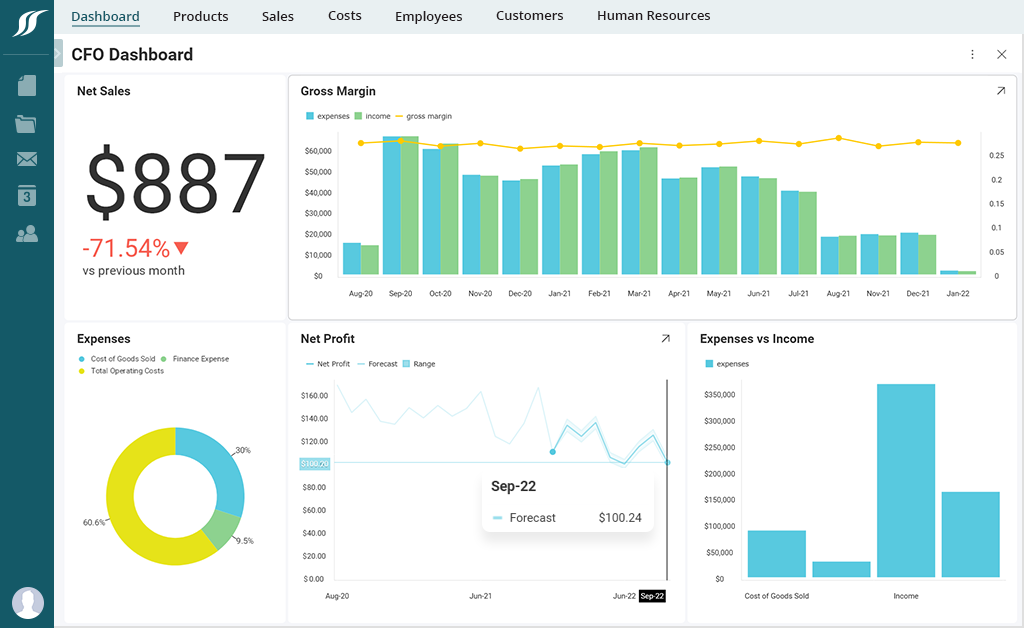
제조– 애플리케이션 분석 도구는 제조업체가 공급업체 성과를 모니터링하고 유지보수 요구 사항을 예측하며 생산 능력을 최적화하는 데 도움이 됩니다. 제조 분석은 품질을 보장하고 성능과 수율을 최적화하며 비용을 절감하고 공급망을 개선하기 위해 기계, 주문, 배송 및 사람과 같은 수많은 소스에서 대량의 데이터를 수집, 처리 및 분석합니다.
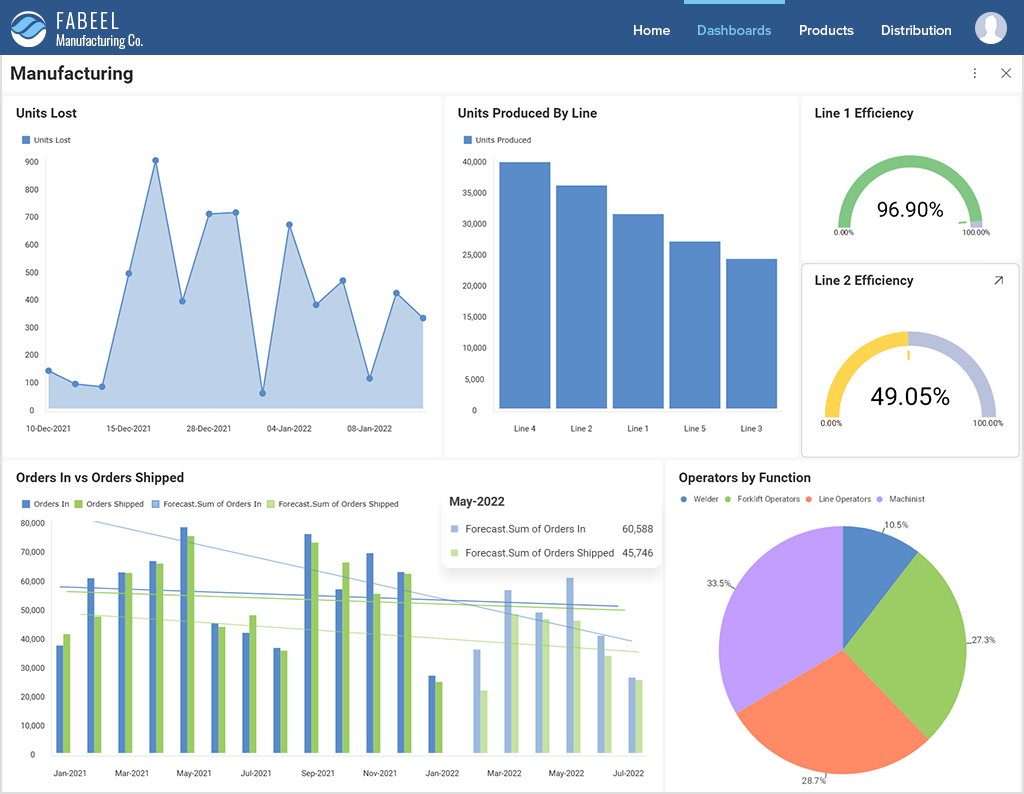
물류 및 배송 – FedEx 및 DHL과 같은 물류 회사는 분석 애플리케이션을 사용하여 전체 운영을 관리합니다. 예를 들어 분석을 사용하여 최상의 배송 경로와 배송 시간을 식별합니다. 물류 및 배송에서는 발송물이 출발지에서 발송되어 배송 주소와 구매자에게 도착할 때까지 품목의 모든 위치가 실시간으로 추적됩니다. 이는 배송 회사가 물품 분실 위험을 최소화하는 데에도 도움이 됩니다.
의료–의료 산업의 데이터 분석 애플리케이션은 매우 가치가 있습니다. 이러한 도구를 사용하여 방대한 양의 정보를 분석하여 다양한 질병에 대한 치료 선택 또는 해답을 찾을 수 있습니다. 예를 들어 의료 분야의 예측 분석을 통해 의료 전문가는 보다 효과적이고 효율적인 운영 및 임상 결정을 내리고 추세를 예측하며 질병 확산을 관리할 수 있는 기회를 찾을 수 있습니다.
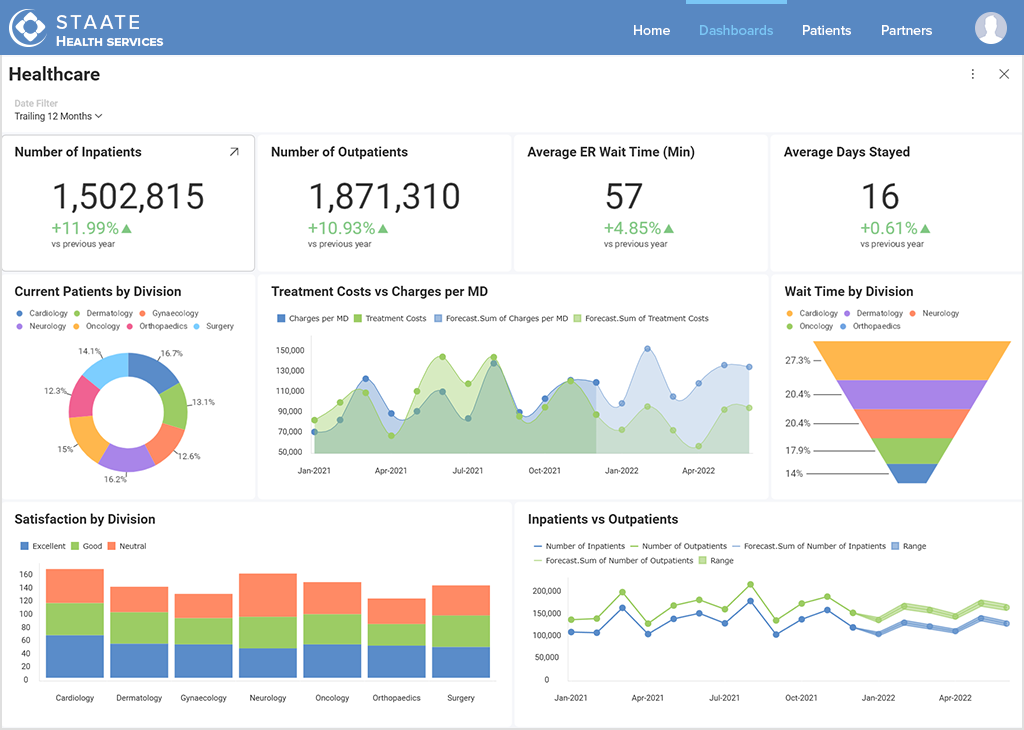
보안– 분석은 그 자체로 회사가 사기 위험을 줄이고 데이터를 더 잘 보호하는 데 도움이 됩니다. 이러한 도구는 기업이 안심할 수 있도록 사기 행위를 감지하고 방지하는 패턴을 식별할 수 있습니다. 대표적인 것이 보험업이다. 신청자의 과거 행동을 기반으로 보험 분석은 회사가 모든 청구를 처리하고 과거 사기의 주어진 추세가 반복되는지 감지하여 그러한 발생을 방지하는 데 도움을 줍니다.
귀하의 비즈니스를 위한 데이터 분석 애플리케이션을 선택하는 방법은 무엇입니까?
모든 요구에 맞는 도구가 없기 때문에 비즈니스에 적합한 데이터 분석 애플리케이션을 선택하는 것은 어려운 일입니다. 다행스럽게도 약간의 도움과 지침을 통해 고유한 비즈니스 사용 사례에 가장 적합한 솔루션을 선택하는 프로세스가 훨씬 쉬워질 수 있습니다. 그 여정을 돕기 위해 공급업체에 투자하기 전에 답변해야 하는 다음 질문 목록을 모았습니다.
누가 분석 애플리케이션을 사용할 예정입니까?– 정교한 데이터 분석가와 데이터 과학자, 직관적인 인터페이스가 필요한 비기술적 사용자가 사용합니까, 아니면 두 종류의 사용자 모두에게 적합해야 합니까? 내부용으로 분석 응용 프로그램을 사용하거나 사용자에게 제공할 예정입니까?
솔루션이 임베디드용으로 제작되었습니까?– 대부분의 임베디드 BI 및 분석 벤더는 웹 또는 데스크탑 기반 대시보드 도구를 구축하기 시작했습니다. 시간이 지남에 따라 이러한 공급업체 중 다수는 임베디드 옵션을 만들기로 결정하여 고객이 앱 경험을 사용하고 자신의 앱에서 제공할 수 있도록 했습니다. 문제 – 놀라운 임베디드 경험을 만드는 것은 어렵습니다. 데스크탑에서 웹, 모든 장치의 임베디드 앱에 이르기까지 경험이 동일해야 한다는 것이 중요합니다.
솔루션이 모든 데이터에 연결될 수 있습니까?– 무엇보다 먼저 솔루션이 어디에 있든 조직의 모든 데이터에 연결할 수 있는지 확인해야 합니다. 우수한 임베디드 분석 공급업체는 사용자가 보다 포괄적인 분석을 위해 하나의 보기 또는 위치로 가져올 수 있는 광범위한 데이터 소스를 지원합니다.
데이터 분석 도구를 사용자 정의할 수 있습니까?– 솔루션이 개인화 기능을 제공하는지 확인하십시오. 제품의 모양과 느낌을 포함하여 고객 여정의 모든 단계를 개인화할 수 있다는 것은 고객 충성도의 핵심입니다. 글꼴 및 색상과 같은 시각적 요소를 사용자 정의하고 궁극적으로 처음부터 자신만의 사용자 정의 테마를 만들 수 있는 솔루션에 투자하십시오.
마지막으로 가격을 고려하십시오. 일부 데이터 분석 애플리케이션은 무료이지만 대부분은 유료입니다. 가장 비싼 도구가 반드시 가장 완전한 기능을 갖춘 것은 아니므로 신중하게 선택해야 합니다. 또한 많은 공급업체는 나중에 고객에게 숨겨진 요금, 사용량 및 사용자 계층을 청구하는 가격 책정 기법을 사용합니다. 명확하고 투명하며 공개적으로 사용 가능한 가격을 제공하는 공급업체와 파트너 관계를 맺는 것이 좋습니다.
Reveal 임베디드 분석 소개
Reveal 직원, 고객, 파트너 및 공급업체의 손에 데이터의 힘을 제공합니다. 추가 요구 사항 없이 데이터 분석을 애플리케이션에 쉽게 통합할 수 있습니다. Reveal의 유연한 아키텍처와 풍부한 API를 통해 앱에서 기능을 제어할 수 있어 사용자 경험의 원활한 부분이 됩니다.
Reveal 모든 기기에서 드래그 앤 드롭 방식의 대시보드 생성 환경을 통해 대화형 대시보드, 드릴다운, 협업, 공유, 진정한 셀프 서비스를 제공하므로 누구나 앱에서 아름다운 대시보드를 구축할 수 있습니다.
데이터의 힘으로 귀하, 귀하의 직원, 고객, 파트너 또는 공급업체는 더 이상 스프레드시트를 분석하느라 시간을 낭비할 필요가 없으며 대신 수집된 통찰력에 집중하고 사실을 기반으로 선택을 할 수 있는 더 많은 시간을 갖게 됩니다. 실시간 데이터에 액세스하여 적시에 조치를 취하고 기회를 놓치지 마십시오.



